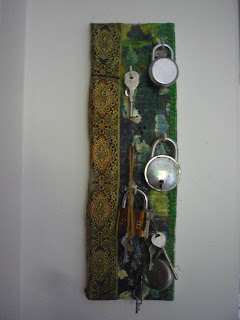 |
| This photo is from http://www.zachdotsey.com/wordpress/2011/07/17/16544 |
I've been asked a few times to share the "curriculum" that I use.
Firstly, I don't really use a curriculum in the sense of a document that tells me what to teach and when. There are curriculums available like that, ranging from alternative and creative to more academic and mainstream. What I don't like about these kinds of curriculums is that they are not and cannot be based on the individual interests, needs and abilities of the child.
I guess they can be useful for giving us activity ideas. Still, I personally find that observing your child and observing the changes around them (weather, friends birthdays, upcoming festivals, etc) can give you more ideas on how to develop a fun and interesting learning environment and activities than you will ever be able to use!
The documents I prefer are those that simply list a general idea of the progression of development within different domains.
I'm going to start with the Early Years documents I use.
Before I say anything else, I just want to add that for such young children the main focus should always be on meeting their needs of security, belonging and love. This age group is often referred to as "the foundation stage" because this is the time a strong foundation for a future happy, stable and capable person is developed. Many people suggest that play and love is all children need at this age. I agree, I also believe that play and love doesn't exclude learning and learning, especially at this age, doesn't have to involve a desk and workbooks.
The early years documents I use are available
here.
For getting an idea of what my children can be learning I
first simply watch them and see what they know now and think about what could follow from what they already know.
Secondly, I take a look at these types of document. From these stepping stones we can get an idea of what our children could be learning, and according to their interests and abilities we can create an environment and, if suitable, activities to promote such learning.
For example, if Miss S one day asks to paint her toenails I can take a few different colours of nail polish out for us to use and talk about. This way we can work towards the learning outcome:
"Explore colour and begin to differentiate between colours." From the Creative Development domain,
while she is having fun doing something that she chose and likes.
Some parents may feel pressured to document their child's progress and learning even at this age! If this is the case, photos, videos and "work" samples are some great ways to document their learning:
- Photos of the block towers they make or plants they help grow;
- Videos of them playing with their friends or singing and dancing; and
- Collecting samples of any of their "work" such as paintings on paper.
You can add a quick caption explaining the learning outcome your child was working towards or achieved during the activity/project. You can even keep a scrapbook (electronic like a blog or a paper book) of all the "evidence" you have collected of your child's progress, remembering to date everything you collect. Finally, you can simply write down anything you saw your child do during the day that relates to their growth and development. Write down your observation and date it, for example: "
Miss S counted to 10 today while we walked up the stairs to our apartment." - 12/07/2001 or "
Miss S, with some support from her brother, shared her doll with our neighbour, on the condition that our neighbour didn't take it home." - 01/09/2001
Well, I hope this is helpful.











































